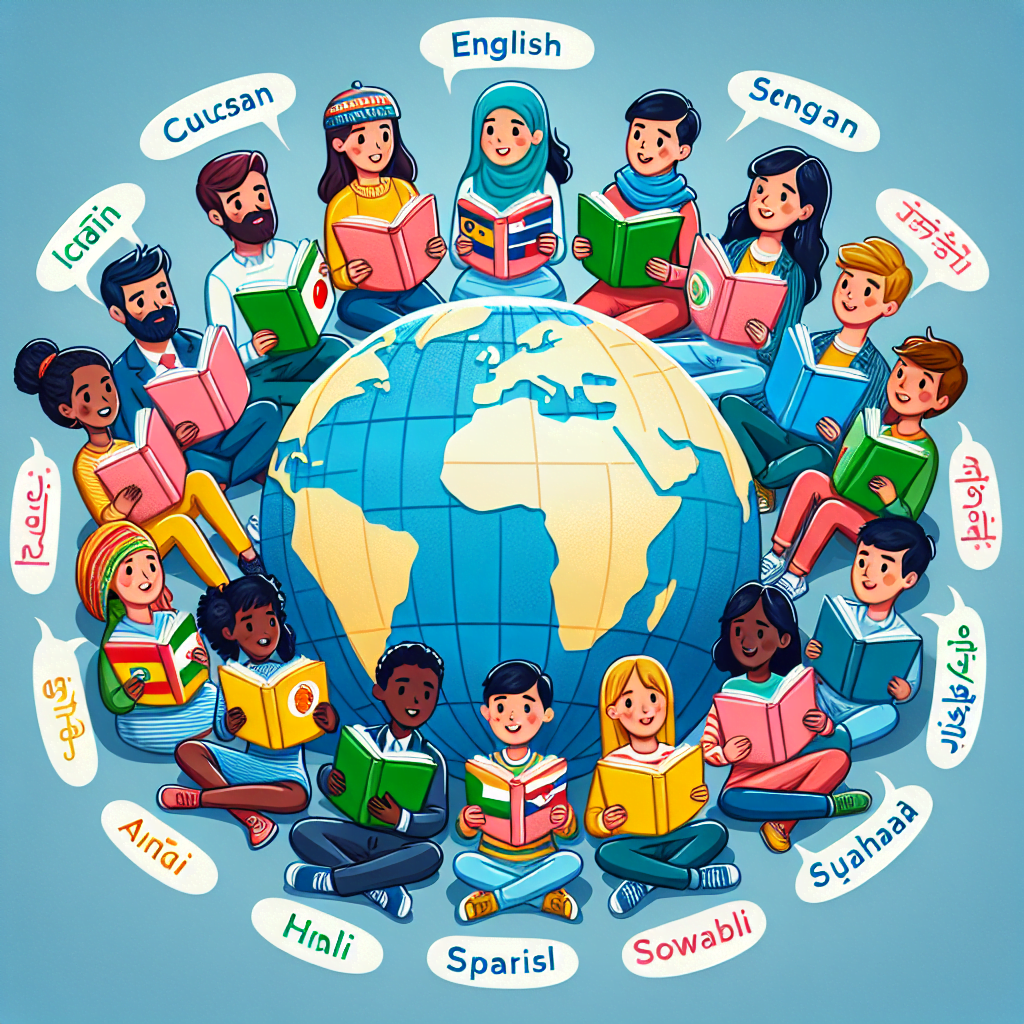In a world that is becoming increasingly interconnected, language barriers can often hinder effective communication and create frustrating obstacles. Whether it’s during travels, business transactions, or even everyday interactions, encountering someone who speaks a different language can sometimes leave you at a loss for words. But fear not! There are practical and friendly strategies that you can employ to navigate these linguistic hurdles, allowing you to bridge the gap and foster meaningful connections with individuals from diverse backgrounds. With a few helpful tips and a positive mindset, you’ll be better equipped to handle language barriers and turn them into opportunities for cultural exchange and understanding.
Table of Contents
Prepare Ahead
Learn Basic Phrases
Before traveling to a foreign country, it is helpful to learn some basic phrases in the local language. This not only shows respect for the local culture but also helps you navigate daily interactions. Simple greetings like “hello,” “thank you,” and “goodbye” can go a long way in establishing a positive connection with the locals. Take the time to familiarize yourself with these phrases and practice their pronunciation.
Study Cultural Norms
Learning about the cultural norms and customs of the country you are visiting will help you understand the appropriate behavior in different situations. This knowledge can help you avoid unintentionally offending someone or misunderstanding their actions. Take the time to research and understand topics such as greetings, body language, appropriate dress, and social etiquette. This will demonstrate your respect for the local customs and make your interactions more meaningful.
Research Communication Tools
In today’s interconnected world, there are numerous communication tools available to bridge the language gap. Before your trip, research tools such as translation apps, language learning software, or handheld translation devices. These tools can help facilitate communication and provide real-time translations. It’s important to familiarize yourself with these tools before your trip, so you can use them confidently when needed.
Use Non-Verbal Communication
Body Language
Non-verbal communication can play a significant role in overcoming language barriers. Pay attention to your own body language and try to convey openness and interest. Maintain eye contact, smile, and use appropriate facial expressions to show understanding and empathy. Similarly, observe the body language of others to help decipher their intentions and emotions. Being aware of non-verbal cues can enhance your ability to communicate effectively.
Gestures
Gestures can be a powerful tool to convey meaning when words fail. However, it is essential to be mindful of cultural differences in gestures, as they may have different interpretations in different countries. For example, a thumbs-up gesture may be seen as positive in some cultures but offensive in others. Research common gestures in the country you are visiting to avoid potential misunderstandings. When in doubt, it’s best to keep gestures simple and neutral.
Visual Aids
Using visual aids can greatly assist in overcoming language barriers, particularly when trying to convey complex or abstract information. Whether it’s a map, a diagram, or a picture, visual aids can help you explain your message in a more visually comprehensible way. These aids can be especially helpful when interacting with individuals who have limited English proficiency. By utilizing visual cues, you can enhance understanding and ensure effective communication.

Be Patient and Understanding
Avoid Frustration
Dealing with language barriers can be frustrating at times, but it’s important to maintain a positive and patient attitude. Remember that the communication challenges you are facing are temporary and can be overcome with time and effort. Avoid getting frustrated or showing impatience, as this can hinder effective communication and create a negative atmosphere. Instead, approach the situation with a sense of understanding and adaptability.
Practice Active Listening
Active listening is crucial when communicating across language barriers. It involves focusing not just on the words being said but also on the speaker’s tone, body language, and context. By being fully present and attentive, you can gain a better understanding of the message being conveyed. Active listening also demonstrates respect for the speaker and promotes a more interactive and inclusive conversation.
Clarify and Confirm
To ensure accurate understanding, it is essential to clarify and confirm information during conversations. If something is not clear to you, ask for clarification or ask the person to repeat themselves. Use simple language and avoid jargon or technical terms that may be difficult to interpret. Paraphrase what you have understood and ask for confirmation to ensure that both parties are on the same page. By seeking clarity, you can minimize misunderstandings and achieve effective communication.
Simplify Your Language
Speak Clearly and Slowly
When communicating across language barriers, it is crucial to speak clearly and at a slower pace. This allows the listener to better process the information and understand your message. Avoid rushing through your words or mumbling, as this can make it difficult for the listener to grasp what you are saying. Enunciate your words, use pauses for emphasis, and speak in a steady and calm manner. By adopting these tactics, you can enhance your chances of being understood.
Use Simple Words and Sentence Structures
Simplicity is key when communicating with limited language proficiency. Use basic vocabulary and sentence structures that are easy to comprehend. Avoid using complex or technical terms that may confuse the listener. Instead, opt for straightforward and concise language. If necessary, break down information into smaller, more manageable chunks. This approach allows for clearer communication and ensures that your message gets across effectively.
Avoid Slang and Idioms
Slang and idiomatic expressions can be challenging to understand for non-native speakers. When communicating across language barriers, it is best to avoid these forms of language altogether. Instead, rely on more straightforward and literal language. By doing so, you can reduce the chances of confusion and promote effective communication. Save the slang and idioms for conversations with individuals who are fluent in your language.

Ask for Help
Find a Translator or Interpreter
If you anticipate encountering significant language barriers, it may be helpful to hire a professional translator or interpreter. These individuals can bridge the gap between languages and ensure accurate and nuanced communication. They are well-versed in both languages and can help convey your message accurately. Look for certified translators or interpreters who specialize in the language pair you require. Their presence can greatly facilitate communication in important situations.
Utilize Language Learning Apps
Language learning apps can be a valuable resource when dealing with language barriers. They provide lessons, vocabulary guides, and practice exercises in various languages. By utilizing these apps before and during your trip, you can familiarize yourself with important phrases and improve your language skills. Some apps even offer real-time translation features, which can be handy when communicating on the go. Make use of these technological tools to enhance your ability to overcome language barriers.
Seek Assistance from Locals
When faced with language difficulties, don’t hesitate to seek help from locals. They are often willing to assist and guide you, even if they have limited English proficiency. Approach them politely, using simple language and gestures to convey your needs. Most people appreciate the effort and will go out of their way to help you. By reaching out to locals, you not only receive practical assistance but also have the opportunity to engage with the local community and gain a deeper cultural understanding.
Learn the Basics of the Local Language
Take a Language Course
Immersing yourself in a language course before your trip can significantly enhance your ability to overcome language barriers. Look for classes or language programs that focus on the specific language spoken in the country you are visiting. These courses typically cover basic vocabulary, common phrases, and essential grammar. Additionally, interacting with fellow language learners can provide a supportive environment for practice and cultural exchange.
Use Language Learning Resources
Language learning resources such as books, online tutorials, and audio programs can supplement your language learning journey. These resources provide structured lessons and exercises that can help you develop your language skills at your own pace. Explore online platforms that offer language learning materials tailored to your needs. These resources can be a valuable tool in your quest to overcome language barriers.
Practice with Native Speakers
One of the most effective ways to improve your language skills is through practice with native speakers. Seek out language exchange partners or conversation groups where you can practice speaking the local language. Native speakers can provide valuable feedback on your pronunciation and grammar, and also expose you to colloquial expressions and cultural nuances. Engaging in conversations with native speakers allows you to develop confidence in communicating effectively and understanding local customs.

Use Visual and Written Aids
Use Pictures or Drawings
When struggling to communicate verbally, visual aids like pictures or drawings can be extremely helpful. Whether it’s a simple sketch or a printed image, visuals can bridge the language gap and facilitate understanding. For example, if you are looking for a specific location, showing a picture of the place or its name written down can assist the person in providing directions. Utilize visual aids as a supplementary tool to enrich your communication and convey your message more effectively.
Write Down Important Information
Carrying a small notebook or using a note-taking app on your phone can be invaluable when dealing with language barriers. Write down key phrases, addresses, or other essential information that you may need to communicate. This way, you can simply show the written information to the person you are interacting with. This method helps ensure accuracy and minimizes misinterpretation. By having important details written down, you can confidently navigate conversations and overcome language obstacles.
Use Translation Apps or Tools
Translation apps or tools can be a lifesaver when faced with language barriers. These applications allow you to type or speak a phrase in your native language and then provide an instant translation in the desired language. Some apps even offer offline capabilities, which can be useful when you don’t have internet access. Utilize these tools to facilitate communication in real-time and bridge the language gap effectively.
Build Rapport
Show Interest in the Culture
Demonstrating genuine interest in the local culture can help foster connections and create a positive atmosphere for communication. Learn about the country’s history, traditions, and customs, and show respect for their cultural practices. Engage in conversations about local topics and ask open-ended questions to encourage dialogue. By showing a sincere desire to learn and appreciate the culture, you can build rapport and strengthen your connections with the local community.
Respect Local Customs
Respecting local customs is crucial when trying to overcome language barriers. Be aware of cultural norms such as greetings, personal space, and appropriate behavior in different settings. For example, in some cultures, it is customary to bow or shake hands upon meeting someone, while in others, a kiss on the cheek may be the norm. By respecting these customs, you show respect for the local way of life and establish a foundation for effective communication.
Learn About Local Etiquette
Understanding and adhering to local etiquette can help you navigate social interactions smoothly. Good manners transcend language barriers and are universally appreciated. Learn basic etiquette practices such as saying “please” and “thank you,” respecting personal boundaries, and observing proper dining etiquette. By adapting to local customs and etiquette, you demonstrate your willingness to connect on a deeper level and foster positive relationships.

Use Multilingual Resources
Multilingual Dictionaries
Multilingual dictionaries are an invaluable resource when facing language barriers. They provide translations of words and phrases in different languages and can be a quick reference tool during conversations. Carry a pocket-sized dictionary or utilize online dictionaries for instant translations. When using these resources, double-check the context in which a translation is used to ensure accuracy. Multilingual dictionaries can be a handy tool in your language toolbox.
Online Translation Tools
In addition to multilingual dictionaries, online translation tools are readily available for overcoming language barriers. These tools offer instant translations of text, voice, or images, providing real-time assistance. Some apps and websites even have features that allow for seamless conversation translation. Utilize these online tools to help bridge the language gap and communicate effectively in various situations.
Language Exchange Programs
Language exchange programs provide an opportunity to practice your language skills while helping others improve their proficiency in your native language. These programs typically involve connecting with language learners who are interested in practicing conversation skills. You can engage in conversational exchange sessions either in person or online. By participating in such programs, you gain practical experience, build cultural connections, and overcome language barriers proactively.
Stay Positive and Flexible
Maintain a Positive Attitude
A positive attitude goes a long way in overcoming language barriers. Embrace the challenges as learning opportunities and approach each interaction with openness and enthusiasm. Don’t let frustration or miscommunication dampen your spirit. Instead, focus on the progress you are making and the connections you are forming. A positive attitude not only helps you stay motivated but also encourages others to engage and communicate more effectively.
Adapt to Different Communication Styles
Each culture has unique communication styles and norms. Adapting to these styles can improve understanding and harmony in your interactions. Observe how locals communicate and modify your own style accordingly. This may involve adjusting your tone of voice, level of formality, or even your physical proximity during conversations. By adapting to different communication styles, you demonstrate respect and create an environment conducive to effective communication.
Embrace the Learning Experience
Overcoming language barriers is not always easy, but it is an opportunity for personal growth and cultural enrichment. Embrace the learning experience and view every interaction as a chance to broaden your horizons. Mistakes and miscommunications are part of the journey, so don’t be afraid to make them. Learn from your experiences and celebrate your progress. Embracing the challenges with a positive and flexible mindset will make your language barrier encounters much more fulfilling.
Dealing with language barriers can be a daunting task, but with the right mindset and approach, it is possible to overcome them. By preparing ahead, utilizing non-verbal communication techniques, staying patient and understanding, simplifying your language, asking for help, learning the basics of the local language, using visual and written aids, building rapport, utilizing multilingual resources, and staying positive and flexible, you can navigate the challenges of language barriers and have meaningful interactions wherever you go. Remember, the key is to embrace the learning experience and approach each interaction with a friendly and open-hearted attitude.

